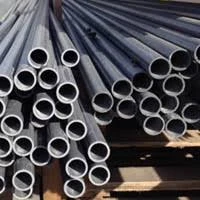
-
 Afrikaans
Afrikaans -
 Albanian
Albanian -
 Amharic
Amharic -
 Arabic
Arabic -
 Armenian
Armenian -
 Azerbaijani
Azerbaijani -
 Basque
Basque -
 Belarusian
Belarusian -
 Bengali
Bengali -
 Bosnian
Bosnian -
 Bulgarian
Bulgarian -
 Catalan
Catalan -
 Cebuano
Cebuano -
 China
China -
 China (Taiwan)
China (Taiwan) -
 Corsican
Corsican -
 Croatian
Croatian -
 Czech
Czech -
 Danish
Danish -
 Dutch
Dutch -
 English
English -
 Esperanto
Esperanto -
 Estonian
Estonian -
 Finnish
Finnish -
 French
French -
 Frisian
Frisian -
 Galician
Galician -
 Georgian
Georgian -
 German
German -
 Greek
Greek -
 Gujarati
Gujarati -
 Haitian Creole
Haitian Creole -
 hausa
hausa -
 hawaiian
hawaiian -
 Hebrew
Hebrew -
 Hindi
Hindi -
 Miao
Miao -
 Hungarian
Hungarian -
 Icelandic
Icelandic -
 igbo
igbo -
 Indonesian
Indonesian -
 irish
irish -
 Italian
Italian -
 Japanese
Japanese -
 Javanese
Javanese -
 Kannada
Kannada -
 kazakh
kazakh -
 Khmer
Khmer -
 Rwandese
Rwandese -
 Korean
Korean -
 Kurdish
Kurdish -
 Kyrgyz
Kyrgyz -
 Lao
Lao -
 Latin
Latin -
 Latvian
Latvian -
 Lithuanian
Lithuanian -
 Luxembourgish
Luxembourgish -
 Macedonian
Macedonian -
 Malgashi
Malgashi -
 Malay
Malay -
 Malayalam
Malayalam -
 Maltese
Maltese -
 Maori
Maori -
 Marathi
Marathi -
 Mongolian
Mongolian -
 Myanmar
Myanmar -
 Nepali
Nepali -
 Norwegian
Norwegian -
 Norwegian
Norwegian -
 Occitan
Occitan -
 Pashto
Pashto -
 Persian
Persian -
 Polish
Polish -
 Portuguese
Portuguese -
 Punjabi
Punjabi -
 Romanian
Romanian -
 Russian
Russian -
 Samoan
Samoan -
 Scottish Gaelic
Scottish Gaelic -
 Serbian
Serbian -
 Sesotho
Sesotho -
 Shona
Shona -
 Sindhi
Sindhi -
 Sinhala
Sinhala -
 Slovak
Slovak -
 Slovenian
Slovenian -
 Somali
Somali -
 Spanish
Spanish -
 Sundanese
Sundanese -
 Swahili
Swahili -
 Swedish
Swedish -
 Tagalog
Tagalog -
 Tajik
Tajik -
 Tamil
Tamil -
 Tatar
Tatar -
 Telugu
Telugu -
 Thai
Thai -
 Turkish
Turkish -
 Turkmen
Turkmen -
 Ukrainian
Ukrainian -
 Urdu
Urdu -
 Uighur
Uighur -
 Uzbek
Uzbek -
 Vietnamese
Vietnamese -
 Welsh
Welsh -
 Bantu
Bantu -
 Yiddish
Yiddish -
 Yoruba
Yoruba -
 Zulu
Zulu
FRP Desalination Solutions for Enhanced Water Treatment Efficiency with Durable Pipes and Fittings
Efficient Water Treatment Using FRP Desalination Pipes and Fittings
In recent years, the demand for clean and potable water has surged due to rapid urbanization, population growth, and climate change. In response, desalination has emerged as a viable solution to address freshwater scarcity in many regions of the world. Fiberglass Reinforced Plastic (FRP) pipes and fittings have become increasingly popular in the desalination industry due to their superior properties, which contribute to efficient water treatment.
The Role of Desalination in Water Supply
Desalination is the process of removing salt and other impurities from seawater or brackish water to produce fresh water suitable for human consumption and agricultural purposes. As freshwater resources dwindle, particularly in arid regions, desalination offers a sustainable alternative. However, the efficiency and effectiveness of desalination systems can be significantly impacted by the materials used in their construction.
Advantages of FRP in Desalination Systems
FRP pipes and fittings are manufactured using a polymer matrix reinforced with fiberglass, which offers a multitude of benefits over traditional materials such as steel or concrete. Some of the key advantages of using FRP in desalination pipelines and fittings include
1. Corrosion Resistance One of the most significant challenges in desalination is the corrosive nature of saltwater. FRP materials are inherently resistant to corrosion, reducing maintenance costs and prolonging the lifespan of the pipes and fittings. This property is particularly crucial in saline environments, ensuring that the integrity of the water supply is maintained over time.
2. Lightweight FRP pipes are considerably lighter than their metal counterparts, making them easier to transport and install. This lightweight nature can lead to reduced transportation costs and a decreased carbon footprint during installation processes, which is increasingly important in today’s environmental context.
frp desalination pipes and fittings for efficient water treatment ...

3. High Strength-to-Weight Ratio Despite being lightweight, FRP offers excellent structural strength and support. This high strength-to-weight ratio makes it an ideal choice for the demanding applications found in water treatment facilities where mechanical stresses may be a concern.
4. Thermal Insulation FRP materials provide natural thermal insulation properties, reducing heat loss in hot climates and minimizing energy consumption in desalination processes that rely on temperature regulations. This can lead to more efficient energy use, which is critical in ensuring the sustainability of desalination plants.
5. Versatility in Design FRP can be molded into various shapes and sizes, offering flexibility in design that allows for customization to fit specific operational requirements. Specialized fittings, valves, and connectors can be produced to meet the unique demands of each desalination project.
Environmental Considerations
The integration of FRP materials in desalination plants also aligns with environmental sustainability goals. By reducing the need for maintenance and enhancing the durability of the systems, FRP contributes to lower environmental impact over the entire lifespan of the infrastructure. Moreover, the energy efficiency brought by FRP helps further decrease the carbon footprint associated with water treatment processes.
Conclusion
FRP desalination pipes and fittings play a pivotal role in promoting efficient water treatment in the face of growing global water challenges. With their resistance to corrosion, lightweight nature, high strength, and thermal insulation properties, FRP materials enhance the reliability and sustainability of desalination systems. As the demand for fresh water continues to rise, embracing innovative solutions like FRP will be essential for developing resilient and efficient water management strategies. By investing in modern technologies and materials, we can make significant strides toward securing a sustainable water future for generations to come.









